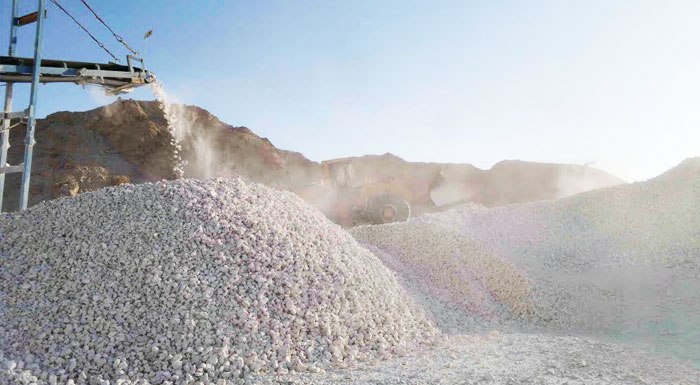The President visited the 8% growth exhibition in the Seventh Development Plan and the Industry and Mining Programs -Iran Mineral resource information.
Mohammad Reza Bahraman, head of the Iranian Mining House, addressed the President and the Minister of Mines in this visit and said: Iran Mineral resource information
- Iran has discovered 68 types of minerals.
- Proven reserves are 37 billion tons and potential reserves are more than 57 billion tons.
- Iran is among the 15 largest mining countries in the world.
- According to the statistics of the Customs of the Islamic Republic of Iran, in 2024 the export value of mineral materials and products in the upstream part of the value chain of basic metals was more than 2,257 million dollars.
- The figure related to the export value of the downstream part of this chain was recorded at nearly
9,149 million dollars.
(Among upstream items, the highest export value was related to iron ore and its concentrate.)
- Among downstream items, iron and steel products are the most valuable export products, and copper products are also in second place.
- Iran’s mines are world-class: 5 iron mines, 2 copper mines, 2 lead and zinc mines, and 2 gold deposits
- The share of the mining and mineral industries sector in Iran’s GDP in the past decade was an average of 5.5%, reaching 9.8% in 2021.
- The 8% growth target in the Seventh Development Plan comes while the long-term economic growth performance of the Iranian economy over the past six decades has averaged 4.3%.
- The decline in the country’s net capital stock in the mining sector over the past decade
- It is estimated that to achieve an average economic growth of 13 percent during the Seventh Plan, it is necessary to add a total of 55 billion euros to the country’s net capital stock in the mining sector over the five years of the plan.
- With the aforementioned calculations, the value of the net capital stock in the mining sector at the end of the plan will reach 65 billion euros
- In 2020, the share of mining in GDP was 3.1 percent, (among the components of the “mining” activity, the largest share (91 percent) was related to the extraction of metal ores. The share of coal was 7 percent and the share of other mines was about 2 percent.) The share of non-metallic mineral products production was 1.7 percent and the share of base metals production was 4.9 percent.
- The highest amount was related to the year 2020, which reached 3.1 percent; However, the share of this sector has been on a downward trend since 2021 and reached 3.2% in 2022.
- Given the energy imbalance in the country, the development of renewable energy can be strategically important.
- Copper, lithium, nickel, manganese, cobalt, zinc, iodine, brine, and rare earth elements The market for these minerals has doubled in the last five years and is expected to increase significantly by 2040, requiring about $1.7 trillion in global mining investment.
- Demand for these types of minerals increased significantly in 2023. Demand for lithium increased by 30% this year, and demand for nickel, cobalt, graphite,e and rare earth elements increased by between 8 and 15%.
- In 2023, the value of international project financing decreased by 26% to $958 billion.
- This decrease was visible in all sectors, but the mining sector witnessed an 11% increase in the value of transactions, indicating an increase in investment in mining projects and the possibility of attracting some of this capital to the country’s mining sector.
- Bahraman also mentioned offshore mining (concentration of world mines based on geography and ownership).
- One of the significant benefits of mining for the economy is the creation of job opportunities (each job in a mine generates 17 jobs in the chain).
- One of the main obstacles to achieving the goals of the development program is the conflicts in the mining sector (about 16.5 percent of the country’s area is free for mining activities.
- Finally, about 7.7 percent of the country’s area is free mining areas with high mining potential).
- The value of global trade in gemstones and jewelry reached about $1,200 billion in 2023.
- One of the most important economic features of gemstones is the added value that is created from the raw state to the final product.
- The study of rare earth elements is limited to a few reports and theses.
- We must be able to raise Iran’s iodine production in the world to the level of the top 3 iodine-producing countries in the world. We have about 40,000 tons of iodine reserves, which is less than 1% of global reserves.

